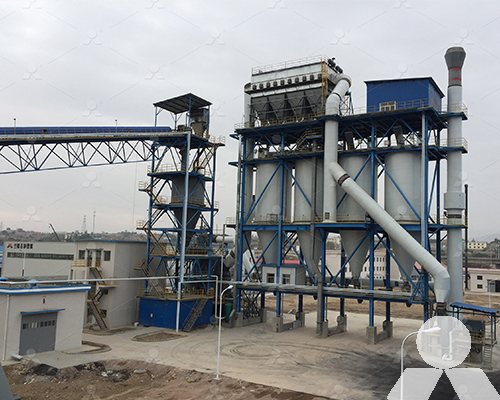Production rate of vertical roller mill in cement industry
Vertical roller mill are a type of grinding mill that is used in the cement industry. They are characterized by their vertical axis of rotation and their use of two or more parallel rollers. Vertical roller mill are a relatively new technology, but they have quickly become the preferred type of grinding mill for cement production.
There are several factors that affect the production rate of a Vertical roller mill. One of the most important factors is the mill’s diameter. Larger mills can grind more material per unit of time than smaller mills. Another important factor is the mill’s speed. Faster mills can grind more material per unit of time than slower mills.

The production rate of a Vertical roller mill is also affected by the type of material being ground. Hard materials, such as limestone, require more energy to grind than soft materials, such as clay. The production rate of a Vertical roller mill is also affected by the mill’s configuration. Mills with a higher degree of turbulence can grind more material per unit of time than mills with a lower degree of turbulence.
The production rate of a Vertical roller mill can be improved by a number of factors. One way to improve the production rate is to increase the mill’s diameter. Another way to improve the production rate is to increase the mill’s speed. The production rate of a Vertical roller mill can also be improved by using a more efficient grinding media.
The production rate of a Vertical roller mill is an important factor to consider when choosing a grinding mill for cement production. By understanding the factors that affect the production rate of a Vertical roller mill, you can choose a mill that will meet your production needs.
Here are some additional details about the factors that affect the production rate of a Vertical roller mill:
- Mill diameter: The diameter of a Vertical roller mill is measured from the center of one roller to the center of the opposite roller. The larger the diameter of the mill, the greater the surface area of the rollers. This means that more material can be ground per unit of time.
- Mill speed: The speed of a Vertical roller mill is measured in revolutions per minute (rpm). The faster the mill rotates, the more material can be ground per unit of time. However, it is important to note that increasing the speed of a Vertical roller mill can also increase the wear on the rollers.
- Material type: Hard materials, such as limestone, require more energy to grind than soft materials, such as clay. This is because hard materials are more resistant to being broken down into smaller particles.
- Mill configuration: The configuration of a Vertical roller mill refers to the arrangement of the rollers. Mills with a higher degree of turbulence can grind more material per unit of time than mills with a lower degree of turbulence. This is because turbulence helps to break down the material into smaller particles.
Here are some ways to improve the production rate of a Vertical roller mill:
- Increase the mill diameter: This is the most effective way to improve the production rate of a Vertical roller mill.
- Increase the mill speed: However, it is important to note that increasing the speed of a Vertical roller mill can also increase the wear on the rollers.
- Use a more efficient grinding media: Grinding media is the material that is used to grind the material in a Vertical roller mill. More efficient grinding media can help to improve the production rate of a Vertical roller mill.
The production rate of a Vertical roller mill is an important factor to consider when choosing a grinding mill for cement production. By understanding the factors that affect the production rate of a Vertical roller mill, you can choose a mill that will meet your production needs.









